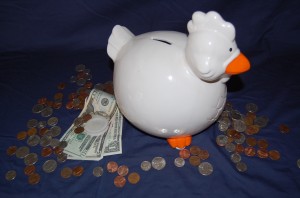I write a lot about how to make your home more energy efficient and saving money on your energy bills is great, but just how do you pay for all this work in a way that makes sense? The answer is one of the best kept secrets in the energy efficiency remodeling business. It is call and Energy Efficient Mortgage or EEM. EEM’s are one of my favorite topics to write about, talk about or just share with people we work with. And it never fails; when I talk about them, people always tell me they have never heard of them. So today, you are going to learn all about how to finance your Energy Efficient repairs.
An EEM helps you roll the costs of energy efficient features into your mortgage by allowing you to qualify for a slightly larger loan than you would otherwise. These loans can be used for new construction or for an existing home.
Suppose you wanted to purchase an older home. You like the house, the price is $250,000, but the HVAC system is ancient and the insulation in the attic is flat and in some places, non-existent and the electric bills that the current owner provides you with show a yearly energy cost of $3889, making the monthly cost of living in the house not an option for you. Not to mention that you have little kids, and a warm, not drafty house, would be the best thing for the little ones.
Talk to your mortgage broker about an EEM, like the one that FHA offers. Then contact a certified HERS Rater to get the process started. A HERS Rater takes a look at the house in its current state and uses their equipment to measure the houses current efficiency rating. You line up the contractors to do the work, in this case an HVAC technician, and an insulation firm and get prices for the work. For our example the house is 2000 s.f., two story house with all the ductwork in the attic and crawlspace. The Rater suggests insulating the underside of the roof of the house with spray foam insulation to bring the entire attic area into the building envelope. And on top of that, he recommends sealing off the crawlspace, making it a conditioned crawlspace using spray foam as well. The Rater runs the numbers through his modeling software and recommends 2 ½ inches of spray foam for the attic and 1 ½ for the crawl space. The price for the attic is $2500 and the crawlspace would be $5000. To replace the HVAC system and seal the ducts would cost $5000. All total, the repairs are going to be $12,500.
An EEM has several ways of calculating how much money they will lend for each house. One of the options is 5% of the appraised value of the house. Let’s say that the house appraises at $250,000 which would allow us to spend $12,500, which is exactly equal to the upgrades we have already chosen. To finish qualifying, our Rater is going to run the changes through his modeling software and calculate the monthly savings we should be able to expect on our utility bills by making these changes. He then takes our proposed monthly savings and compares them to the proposed increase in our monthly mortgage payments due to the renovation work that we are adding to our financing.
Financing $250,000 at 4.25% interest on a 30 year loan would result in a monthly payment of $1490.00. If we added the $12,500 to the mortgage our monthly payment would increase to $1565.00 a difference of $75. After modeling the house, the Rater determines that the yearly utility bills would only be $2049 which is a yearly savings of $1840 or $153/month. So in the end, you would be paying an additional $75 per month on your mortgage payment but would be saving $153 per month on your utility bills making a net difference in your favor of $78! You could actually say that by doing the improvements you will actually be paying less per month to own the house. And in the end, you have house that is healthier, more comfortable, worth more, energy efficient and, yes, greener. I can’t find a single down side to using them.
Now can you understand why this is one of my favorite topics? I don’t understand why more people don’t ask for EEM’s when it comes to purchasing a house. You would think they would be the most popular mortgages on the market. As it is, they are energy efficiency world’s best kept secret. Want more information? https://www.energystar.gov/index.cfm?c=mortgages.energy_efficient_mortgages

